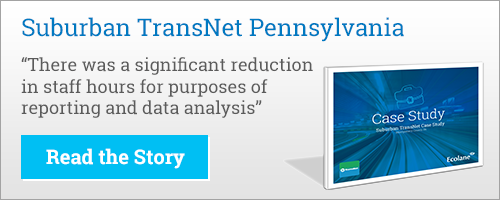As the old adage goes, ‘the devil is in the details’, and in relation to the transportation industry this statement could not be truer. Public transportation agencies are often challenged with generating insights into the efficiency and cost-effectiveness of their operations, but with so many moving parts, accurate and effective reporting can seem like somewhat of an impossible task.
NTD Reporting
The National Transit Database (NTD) is a centralized database that hosts and records the financial, operating and asset conditions of transit systems across the United States. With over 2800 transit systems reporting the NTD, this database contains transit profiles that include frequently sought-after data such as national transit summaries and trends, time series data that dates back to 1991, up-to-date monthly ridership data, and time series safety data.
The purpose of the NTD is to support local, state, and regional planning efforts and to aide governments and other key decision-makers in making multi-year comparisons and performance trend analyses. By leveraging this database, transit agencies are able to establish key benchmarks that can be used to identify areas of improvement within their organization.
Although a valuable baseline to utilize when establishing internal performance benchmarks or compare agencies with similar operational dynamics with one another, the NTD is unable, due to sheer size, to provide transit agencies with any sort of actionable insight to what actions resulted in their reportable statistics. The NTD is a great resource to leverage when seeking raw and/or historical data, but does not offer the segmentation capabilities that allow transit agencies to make daily improvements to their systems, operations, and internal processes.
Ecolane’s DRT Software
As mentioned previously, there are a lot of moving parts involved in the day-to-day operations of transit agencies. From drivers and dispatchers to customer liaisons and general managers, transit agencies must possess an exceptional amount of coordination and discipline in order to operate smoothly.
In recent years, we’ve seen the adoption of technological advancements, such as transportation software, in vehicle solutions, IVR, phone applications for self-service, and all the other ITS services in the market in an effort to eliminate cumbersome processes and streamline transit operations and improve communication flow. Although these innovations have significantly improved upon the systematic and operational hindrances previously faced by transit agencies in collecting and communicating data, many still lack the automation, analytics, and reporting capabilities necessary to keep pace with market demands and truly improve transit. However, Ecolane’s transportation software has surpassed the industry standard to deliver a solution that provides transit agencies with the automation, analytics and reporting capabilities needed to drive public transportation to the next level.
There are a number of reasons why Ecolane’s transportation software is superior to all others in the market today, but perhaps the most significant are tied to its data aggregation and mining capabilities, data segmentation, report validation, and ability to provide real-time, actionable insight.
Data Aggregation and Mining
Rather than spending countless hours sifting through the sea of data points within the MDT, Ecolane’s transportation software leverages a back-end functionality that aggregates all of the MDT’s raw data into relevant categories to deliver greater levels of efficiency within the data mining process. Subsequently, the data mining process becomes dramatically less burdensome because transit agencies have more data, more accurate data, and more applicable data to use when analyzing market and organizational trends.
However, the value gained through superior data aggregation and mining goes beyond time and resource savings, and is realized when those trends and patterns are used to identify operational inefficiencies and make strategic organizational decisions accordingly.
Data Segmentation
The majority of available transportation software does not possess the same data segmentation, or ‘break-down’, capabilities as Ecolane’s. Most tools allow transit agencies to segment its data into high-level, canned reports such as mileage, speed, and driver performance, but don’t provide the necessary visibility and insight into more granular areas within its operations.
However, Ecolane’s transportation software gives transit agencies the ability to utilize what’s referred to as ‘operational statistics analysis’ to break down the performance of individual roles within their agency to better determine where operational inefficiencies lie, and provide greater insight into how to fix those inefficiencies.
Report Validation
When success isn’t measured on a daily or weekly basis, but rather on an hourly or minutely basis, real-time and accurate information can make all the difference. Unlike the majority of transportation reporting tools, Ecolane’s transportation software allows transit agencies to generate cross-reference reports to ensure that all the numbers ‘add up’, giving transit agencies the confidence to know that their data is clean and accurate.
Actionable Insight
The last, but certainly not least reason for why Ecolane’s transportation software is unmatched in the industry is due to its ability to provide actionable insight. Instead of running reports just for the sake of running reports, agencies can use their data-driven insights to make real-time decisions that will lead to smoother operational performance, and ultimately more satisfied customers.
At Ecolane, we understand that each individual transit agency has a unique set of business needs, and thus, requires a different set of tools and resources to support it. Meaning, commoditized reporting tools that solely produce ‘canned’ reports are no longer a sufficient means for delivering visibility and insight into transit operations. However, with Ecolane’s transportation software, transit agencies can overcome existing reporting challenges and turn their insights into actionable intelligence.
About the Author

Ecolane
Read Ecolane's blog articles for perspective, opinion and information on transit and paratransit issues.
%20(200%20x%20100%20px).png)

